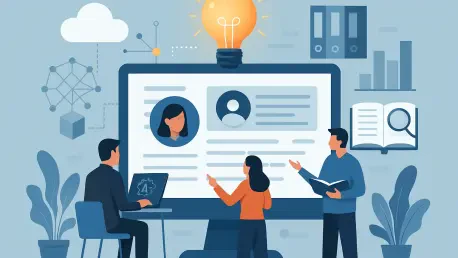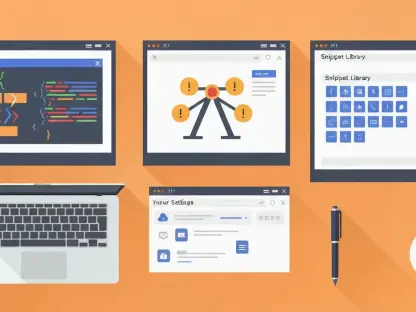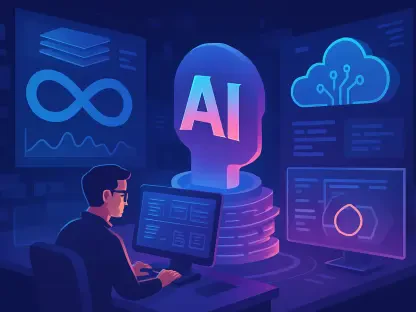Let me introduce Vijay Raina, a seasoned expert in enterprise SaaS technology and software design. With years of experience shaping innovative tools and providing thought leadership in software architecture, Vijay offers invaluable insights into the evolving landscape of workplace solutions. Today, we dive into the transformative world of enterprise knowledge management with a focus on the latest advancements, including Stack Internal and its groundbreaking 2025.8 release. Our conversation explores how this platform redefines access to trusted information, integrates AI into daily workflows, and addresses the challenges of fragmented knowledge in large organizations.
How did the vision for Stack Internal evolve from its predecessor, and what makes it unique in connecting people with knowledge?
Stack Internal is really a natural progression from Stack Overflow for Teams. While the earlier platform was about creating a space for technologists to share and access knowledge, Stack Internal takes a bolder step by embedding itself as a core intelligence layer within an enterprise. The inspiration came from seeing how fragmented and siloed information still is in many organizations. We wanted to build something that not only connects people to answers but also integrates seamlessly into their existing tools and workflows. It’s about making knowledge actionable—whether you’re coding, managing a product, or analyzing data, Stack Internal ensures you have trusted, relevant information right where you need it.
What does it mean for Stack Internal to serve as an enterprise knowledge intelligence layer, and how does it impact daily operations?
Think of it as a central nervous system for an organization’s knowledge. Stack Internal captures, validates, and delivers accurate information directly into the systems and tools employees use every day. It’s not just a repository; it’s a dynamic layer that integrates with IDEs for developers, collaboration platforms for product managers, and even AI-driven tools for data scientists. This means less time searching for answers and more time solving problems. It streamlines operations by ensuring everyone has access to the same trusted data, reducing errors and speeding up decision-making across the board.
Can you elaborate on how Stack Internal supports different roles within an organization with tailored knowledge delivery?
Absolutely. For developers, Stack Internal integrates directly into their coding environments, providing real-time access to verified solutions or best practices without breaking their workflow. For product managers, it might surface critical insights or past project learnings within tools like Microsoft Teams, helping them make informed decisions quickly. Data scientists using AI copilots benefit from grounded, organization-specific responses that aren’t just generic web data. The platform adapts to the context of the user’s role and tools, ensuring relevance and accuracy no matter who’s accessing it.
Let’s dive into the Model Context Protocol (MCP) Server. How does it bridge AI tools with an organization’s verified knowledge base?
The MCP Server is a game-changer in how AI interacts with enterprise data. It acts as a secure conduit between popular AI tools—like GitHub Copilot or ChatGPT—and a company’s own verified knowledge within Stack Internal. Essentially, it ensures that when an AI tool generates a response or suggestion, it’s grounded in the organization’s real, trusted data rather than generic or potentially outdated information from the internet. This connection creates a level of accuracy and relevance that generic AI models can’t match, tailoring outputs to the specific needs and context of the enterprise.
What are some tangible benefits of having AI responses that are grounded in organizational knowledge through the MCP Server?
The benefits are significant. First, you get accuracy—AI responses are based on your company’s actual policies, codebases, or past solutions, so there’s less risk of irrelevant or incorrect suggestions. Second, there’s attribution; you can trace back where the information came from, which builds trust. Finally, it saves time. Instead of sifting through generic answers, employees get precise, context-aware guidance that directly applies to their work. This can accelerate everything from debugging code to drafting project plans, all while maintaining a high standard of reliability.
How does the bi-directional flow of the MCP Server help keep knowledge up to date within an organization?
The bi-directional flow is a powerful feature. It means that not only does the MCP Server pull verified knowledge to inform AI responses, but AI agents can also suggest updates or improvements to the knowledge base based on new interactions or patterns they detect. For example, if an AI notices a recurring question or a gap in documentation, it can flag this for human review or propose content updates. This creates a living, breathing knowledge system that evolves with the organization, ensuring it stays current without requiring constant manual intervention.
Can you explain how the MCP Server prioritizes privacy and control for enterprises?
Privacy and control are non-negotiable for enterprises, and the MCP Server is designed with that in mind. It runs within the organization’s own infrastructure, meaning sensitive data never leaves the company’s environment. This on-premises deployment ensures full governance over who accesses what and how data is used. Additionally, the system adheres to strict access controls and compliance standards, so enterprises can confidently integrate AI tools without worrying about data leaks or unauthorized use. It’s about empowering organizations to leverage AI while maintaining complete oversight.
Turning to Knowledge Ingestion, how does this feature tackle the problem of fragmented information in enterprises?
Knowledge Ingestion addresses one of the biggest pain points in large organizations: scattered, unorganized information. It works by pulling content from various tools—think Confluence, Slack, Microsoft Teams, or ServiceNow—and transforming it into structured, trusted knowledge within Stack Internal. Using AI, it analyzes and categorizes this content, applies confidence scoring to filter out noise, and then involves human validation to ensure only high-quality information is published. This process turns disparate data into a unified, accessible resource, reducing the chaos of searching across multiple platforms.
How does Knowledge Ingestion specifically benefit new employees or teams during onboarding?
For new employees, Knowledge Ingestion is a lifesaver. Instead of spending weeks navigating different systems or waiting for someone to point them to the right documentation, they can access a centralized, validated knowledge base from day one. It seeds historical content—like past project summaries or process guides—into Stack Internal, so newcomers get up to speed faster. This cuts down onboarding time significantly, allowing teams to focus on productivity rather than playing catch-up. It’s also a foundation for consistent training across departments.
What’s your forecast for the future of enterprise knowledge management and AI integration in the workplace?
I believe we’re just at the beginning of a major shift. Enterprise knowledge management will increasingly become the backbone of AI-driven workplaces, where platforms like Stack Internal will not only store knowledge but actively predict and surface what employees need before they even ask. AI integration will deepen, moving beyond simple responses to autonomous workflows—think agents that proactively solve issues or optimize processes based on real-time data. The challenge will be balancing innovation with trust, ensuring AI remains grounded in verified, human-validated knowledge. Over the next few years, I expect to see a tighter fusion of human expertise and AI capabilities, creating workplaces that are smarter, faster, and more connected than ever before.









